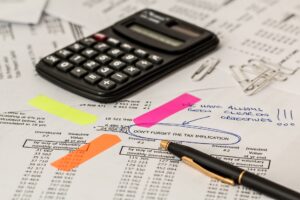- Identify proper financial statement presentation of plant assets
The balance sheet we learned at the beginning of the course in both the report form (assets are first and liabilities and equity are below) and the account form (side-by-side) was fairly simple and straightforward. Balance sheets produced by publicly traded companies contain a lot of information and are almost always in the report form. Like the multi-step income statement, they follow a certain format that includes subtotals. The classified balance sheet groupings and subtotals make the balance sheet easier for investors to read and analyze. The classified balance sheet still proves the accounting equation but it separates assets and liabilities into the following subgroups:

- Current Assets: Can be converted to cash within a year or within the operating cycle, whichever is longer. Current assets include cash, accounts receivable, interest receivable, supplies, inventory, and other prepaid expenses.
- Long-Term Investments: Investments that are not due for more than a year are reported in this section. Long-term investments would include notes receivable or investments in bonds or stocks.
- Plant Assets: Plant assets (also called PP&E or fixed assets) refer to property that is tangible (can be seen and touched) and is used in the business to generate revenue. Plant assets include depreciable assets and land used in the business. The plant asset is recorded with its accumulated depreciation (if any) subtracted below it to get the asset’s book value.
- Intangible Assets: Intangible assets are items that have a financial value but do not have a physical form. These would be things like trademarks, patents, and copyrights.
- Current Liabilities: Like current assets, these are liabilities whose payment are due within a year or within the operating cycle, whichever is longer. Current liabilities include accounts payable, salaries payable, taxes payable, unearned revenue, etc.
- Long-Term Liabilities: Liabilities due more than a year from now would be reported here, including notes payable, mortgage payable, bonds payable, etc.
As an example, here is the classified balance sheet for Home Depot, Inc. Look through it and identify the various subgroups we just discussed for the assets and liabilities on a classified balance sheet.
Other current assets1,040890 Sales taxes payable605656 Deferred revenue2,1161,782 Income taxes payable5511 Current installments of long-term debt1,8391,056 Current operating lease liabilities828— Other accrued expenses2,6772,611
| in millions, except per share data | February 2, 2020 | February 3, 2019 |
|---|---|---|
| Category, Assets | ||
| Subcategory, Current Assets: | ||
| Cash and cash equivalents | $ 2,133 | $ 1,778 |
| Receivables, net | 2,106 | 1,936 |
| Merchandise inventories | 14,531 | 13,925 |
| Total current assets | Single line 19,810Double line |
Single line 18,529Double line |
| Net property and equipment | 22,770 | 22,375 |
| Operating lease right-of-use assets | 5,595 | — |
| Goodwill | 2,254 | 2,252 |
| Other Assets | 807 | 847 |
| Total assets | Single line $ 51,236 Double line |
Single line $ 44,003 Double line |
| Category, Liabilities and Stockholders’ Equity | ||
| Subcategory, Current liabilities: | ||
| Short term debt | $ 974 | $ 1,339 |
| Accounts payable | 7,787 | 7,755 |
| Accured salaries and related expenses | 1,494 | 1,506 |
| Total current liabilities | Single line 18,375 |
Single line 16,716 |
| Long-term debt, excluding current installments | Single line28,670 | Single line26,807 |
| Long-term operating lease liabilities | 5,066 | — |
| Deferred income taxes | 706 | 491 |
| Other long-term liabilities | 1,535 | 1,867 |
| Total liabilities | Single line 54,352 |
Single line 45,881 |
| Single line | Single line | |
| Common stock, par value $0.05; authorized 10,000 shares; issued: 1,786 shares at February 2, 2020 and 1,782 shares at February 3, 2019; Outstanding: 1,077 shares at February 2, 2020 and 1,105 shares at February 3, 2019 | 89 | 89 |
| Paid-in capital | 11,001 | 10,578 |
| Retained earnings | 51,729 | 46,423 |
| Accumulated other comprehensive loss | (739) | (772) |
| Treasury stock, at cost, 709 shares at February 2, 2020 and 677 shares at February 3,2019 | (65,196) | (58,196) |
| Total stockholders’ (deficit) equity | Single line (3,116) |
Single line (1,878) |
| Total liabilities and stockholders’ equity | Single line $ 51,236 Double line |
Single line $ 44,003 Double line |
| Note See accompanying notes to consolidated financial statements | ||
Now, try out what you learned: